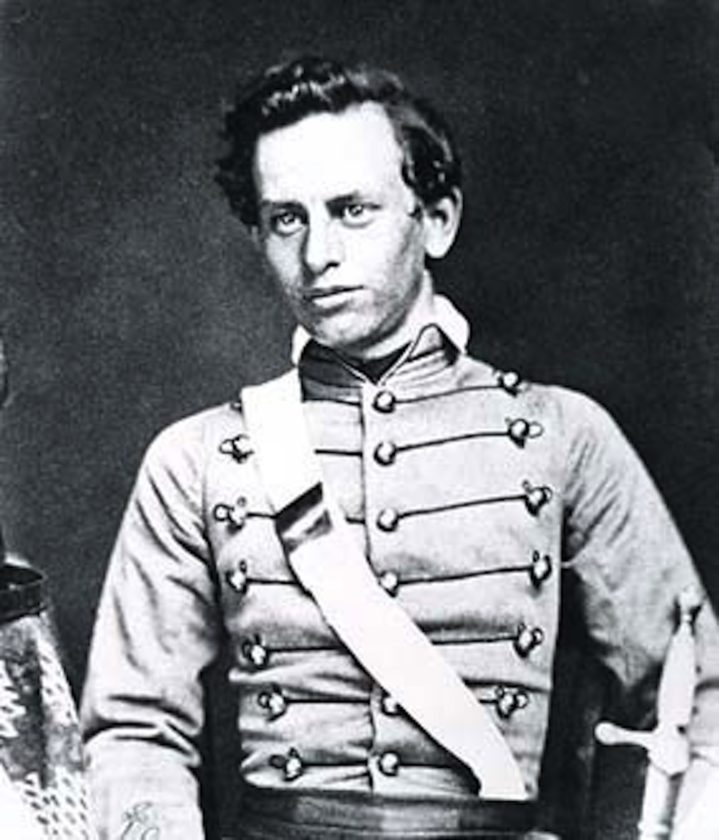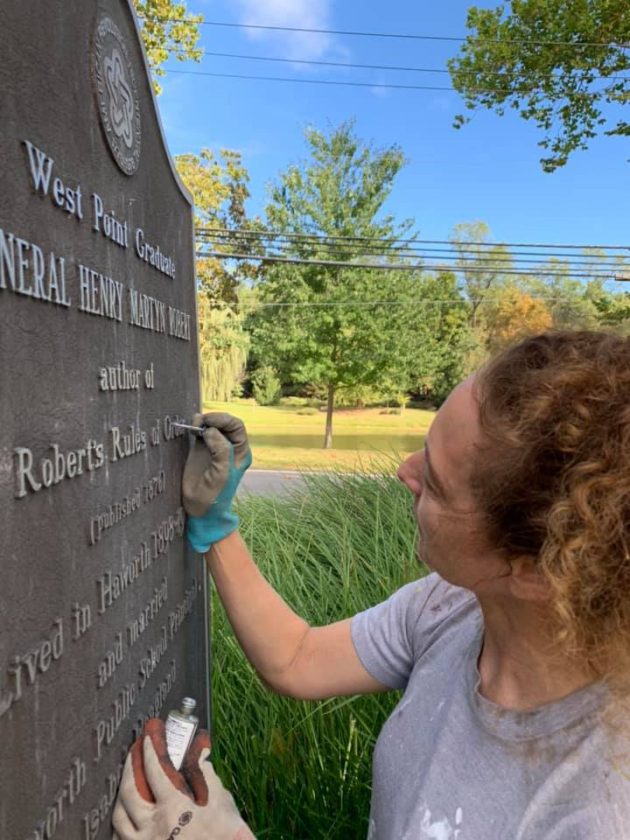

HAWORTH, N.J.—Whether or not we know it, we’re all living by Robert’s Rules. The most widely used manual of parliamentary procedure in America, “Robert’s Rules of Order” is a guide for keeping meetings fair, efficient, democratic and orderly, and ensuring we stay civil toward one another. Our local municipal councils all function under this model. So do nonprofits, churches, school boards, homeowner associations, professional organizations, and more. But did you know the rules’ author lived in Haworth?
It was a fact that surprised local resident Sharon Grosso, who recently gave a speech on Brigadier Gen. Henry M. Robert during a meeting of the public speaking club Valley Toastmasters. The group meets on the first and third Mondays of each month from 8–10 p.m. at First Congregational United Church of Christ, Haworth.
“While I was researching this topic I found out that Gen. Henry M. Robert lived in Haworth,” Grosso wrote to Northern Valley Press. “There is a historic marker in town in his honor and the Haworth Library has a signed copy of the book—first published in 1876 and currently on its 11th revised edition.”
The marker stands on the island dividing the road where Terrace Street meets Haworth Avenue. Robert first lived on Terrace Street when he moved to Haworth in 1898. Later, he and wife Isabel Hoagland, the local grammar school principal, lived on Sunset Avenue.

With help from borough historian Beth Potter, Grosso was moved to give the marker some TLC in time for Haworth Day on Oct. 5.
“The marker had faded and was almost hidden by tall grasses, there in the median across from the duck pond,” Potter wrote on Facebook. “Sharon was researching the general for a speech for Toastmasters, and was motivated to revive the marker, even getting official historic marker paint from the official historic marker company.”

Robert was born in South Carolina in 1837, but his father moved the family to Ohio due to his strong opposition to slavery. Upon graduating fourth in his class from West Point, Robert embarked on a lifelong career as a military engineer.
During the Civil War he helped build defenses at Washington, D.C., Philadelphia, and several New England ports with the Army Corps of Engineers. He served with the Army until his retirement in 1901, during which time engineering projects took him all over America—from Oregon to Texas, and from Michigan to Mississippi.
Yet, what Robert is most known for is his 1876 “Pocket Manual of Rules of Order for Deliberative Assemblies.” The book, according to a history from the U.S. Army Corps of Engineers, came about after an unruly church meeting.
“Meetings can be lively, heated, even rancorous affairs, and church meetings, as anyone who has attended them can attest, are no exception. Twenty-five-year-old Army Engineer Henry Martyn Robert found this out while stationed in New Bedford, Mass., in 1862–1863, recovering from a tropical fever he had contracted in Panama. A deeply religious Baptist, he was unexpectedly asked to chair a meeting of the local Baptist Church. The challenge proved formidable,” the article states.
“In all his assignments he had shown himself to be a promising soldier, competent leader, and an outstanding engineer. Yet, at New Bedford, Robert lost control of the church meeting,” it continues.
Perturbed, Robert dove head-first into studying parliamentary procedure. Finding existing manuals lacking, he set out to create his own. His 1876 work had an initial run of just 4,000 copies that were printed at his own expense.
By the early 20th century, all other parliamentary guides had fallen by the wayside. The National Association of Parliamentarians calls “Robert’s Rules” “the most widely used reference for meeting procedure and business rules in the English-speaking world.” Over 5.5 million copies have been printed.
